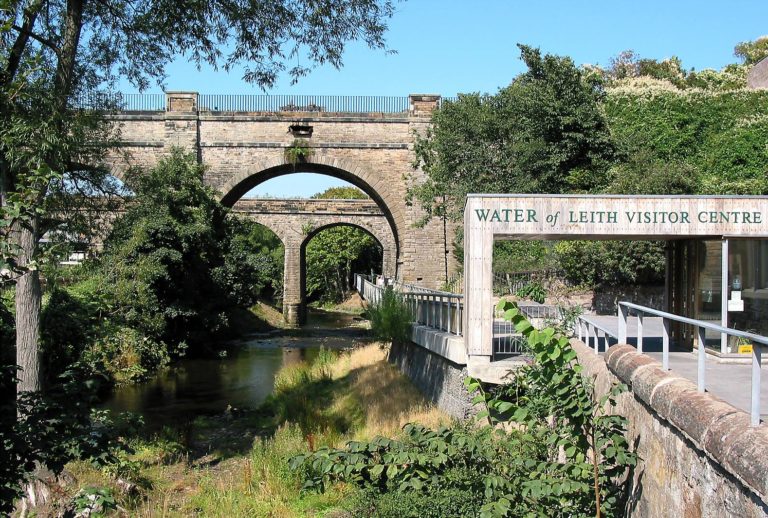Welcome to the beautiful and weird world of Fungi that is right on the doorstep of the Water of Leith Visitor Centre, by the Water of Leith’s very own Fun-Guy Michael!
Wandering from our Visitor Centre and crossing Lanark Road, you are greeted by a great monolith, a giant slab of slate reflecting Slateford’s name. Here dogs, walkers and volunteers alike cross the line from the urban to the ancient wood of Craiglockhart Dells. Yet here in what looks at first glance a simple wood, lies many stories. From Cromwellian sieges, Iron age settlements and a landed gentry enjoying it as their own delightful garden. Yet my focus over the last few months tells a much damper earthier tale of a world right beneath our feet and one that really comes to view as the cold damp months settle in – The wonderfully weird world of fungi!
When we think of fungi, we often think of decay and whilst it’s important for the past structures of life to break down and return to the soil, you’ll find that in this fungi world beneath the surface that things are not always what they seem. For in woodland soil, you’ll find an enormous and complex fibrous network of mycorrhizal roots, some microscopic whilst others visible as tiny fibers. These fungi fibers make a ‘Wood Wide Web’, which rather than decaying alone plays a vital role in bringing life to the very wood we like to wander in. Surprisingly with this WWW network, trees communicate to each other sending signals of pesty attack if being munched and use it to pass information on who needs what and where. Crucially this biological network also helps most of our plant species unlock vital nutrients and minerals that otherwise would be locked in the soil, so without a humble fungi network many species of plants wouldn’t even exist.
So naturally, I pondered one August afternoon after stumbling on some field mushrooms amongst the nettles – what exactly do we have within the Craiglockhart Dells when it comes to fungi? And what wonderful things can we learn from them?
So, I began my fungi adventure clipboard and identification books in hand, ready to discover what lies amongst the trees and meadows. Yet before running out to the woods in search of fungi, I did need some method for the potential madness of searching for fungi. Especially with some species like the Holly Leaf Parachute I’ve found, are literally the size of a pin!
The Holly Leaf Parachute grows as the name suggests only on Holly leaves, damp and buried beneath the surface, it’s a tough find in a wood as large as the Dells and if honest I only stumbled on them thanks to crawling amongst a holly bush to clean up some discarded gas canisters – A rather nice surprise to a rather spikey task.

So, it’s not just a case of finding where all the logs and mulch are for the most fungi as that will only lead to certain species whilst overlooking many. So, I had a good wander and created three survey areas to focus on the diverse and fungi rich environments that you’ll find in the Dells.
Area 1 – Around the grottos and bridges to represent the designated ancient woodland of the Dells
Area 2 – Bogs Mill Meadow representing a woodland edge and wildflower meadow environment.
Area 3- The orchards and spaces around Redhall Walled Gardens to represent a worked soil environment.
So, now after a few months of surveying what have I discovered?
Well, if I was to write here every fungus species, I’ve found so far there would be a list of well over 60 different species!
So instead, here’s a top 10 highlights of my recent marvellous fungi exploration in the Dells.

No 10 – Jelly Baby Fungi:
These clustered bean-like fungi are an unusual find, smooth and rubbery in texture they release their spores through the top of the cap and as fungi range from bright yellow, peach and orange in colour. They may look like a tasty treat but are best avoided in eating as it’s still up to debate whether they are edible or not!

No 9- The Cucumber Cap:
Keeping with the theme of food this stripy fungus known as the Cucumber Cap, was living its best life amongst the mulch and comfrey under an apple tree by the Redhall Walled Garden. The Cucumber Cap loves the nitrogen rich soil that’s around that area in particular thanks to all the comfrey plants. They’re apparently named the Cucumber Cap as it smells like fresh cucumber, but don’t let that deceive you, it’s rather poisonous!

No 8 – Artists Bracket:
Being a lover of all things artsy it would be a crime to have not given this common shroom a mention, it’s a tough bracket fungus often found on old logs all year, widespread across the Dells. Its namesake comes from the fact that its white underside scratches brown therefore it can be used as a bit of a blank canvas! So, whoever said fungi is no fun certainly hasn’t been doodling on their local Artist Brackets.

No 7- Crystal Brain Fungi:
In keeping with the spooky Autumn vibes these fungi, despite its name, isn’t made of brains but more a biological jelly. This common splodge is found usually on fallen branches in damp woodlands and shows just how the fungi family isn’t all about pretty toadstools and can result in some awesomely weird forms and equally fun names!

No 6 – Hairy Curtain Crust:
Continuing the theme of fun names, it would be rude not to include this wavy orangey yellow log loving fungi, the Hairy Curtain Crust! A name inspired by its wavy growing patterns and its velvety textures. Also quite like a pair of curtains, it’s not worth trying your luck in eating these common fungi!

No 5 – The Larch Bolete:
The Boletes are fascinating chunky species of fungi where most are recognisable from a spongey underside rather than the typical mushroom gill. The Larch Bolete is a somewhat fussy fungi when it comes to location, so I was delighted to find a patch of them growing in Bogs meadow. This bright yellow chunky fungus as the name suggests only thrives around Larch trees in a light and grassy area. The Larch Bolete is also a fungus that works in symbiosis with the Larch exchanging and sharing nutrients benefiting its tree host.

No 4- The Glistening Ink Cap:
This is another common sight in the Autumn growing as large clusters on the undersides of logs and stumps where its shady and damp. As the name suggests they glisten after rainfall as small droplets frequently get trapped on their surface that has a layer of reflective mica like cells. They also get their ink cap name from the black slimy edges they get when old and decaying.

No 3- The Collard Earthstar:
This rather alien fungi are one of my all-time favourites! The name is due to its thick case that splits and lifts the puffball fungi off the ground as it grows so it is in prime position to be rained on. Rather cleverly for a fungi this puffball wants the rain drops batter its thin lifted ball to release clouds of thousands of spores in a puff. They are a frequent sight that I can’t stop stumbling upon amongst the bases of trees and forest ground around the Dells and before you ask, of course I still pick up a stick and poke them! – For why wouldn’t you want to be a giant raindrop in the presence of an Earthstar.

No 2- The Scarlet Waxcap:
As the name suggests this fungus has a quite waxy appearance that looks smooth and glossy in the rain, a characteristic of the bright and colourful Waxcap family. The Scarlet Waxcap can be found in a beautiful spectrum of yellows and oranges as well as reds but unfortunately, due to the destruction of many of our wildflower meadows and the overfertilizing of land from farming they are lot less common than many of its fungi siblings. Rather wonderfully though Bogs Meadow is hand scythed and raked every September, keeping its soils unfertilized and poor and the meadow rich with many wildflowers and fungi alike.

No 1 – The Trooping funnel:
This fungus has been one of my most recent discoveries and one of the most impressive of fungi sights. These Troopers were in rows across Bogs bridge with almost some of the individual fungi being the size of my hand! They are a species that thrive on the rotten leafy mulch breaking it down frequently fruiting in enormous rings known as troops living up to its name. Though rather amusingly they are also found across the Atlantic in the USA where these fungi are known as Monks Head.

So, the next time you head out to the water of Leith for a wander, keep your eyes out for perhaps there’s an entire world of fun fungi below just waiting for you to discover!


